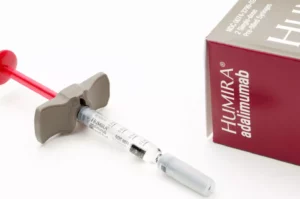After a long and stressful day waiting at a crowded doctor’s office, surrounded by sick people, then fighting traffic to the pharmacy, it’s the very last thing we want to hear from the pharmacist: “Unfortunately, your insurance company requires a prior authorization before we can fill this prescription”. As we leave the pharmacy in frustration, we can’t help but wonder “I wish my doctor knew this prescription wasn’t covered before I wasted my time coming here!!” It comes as no surprise that prior authorization requirements such as this can often cause delays in care.
At VativoRx, we understand how inconvenient the entire prior authorization process can be for all parties, including our members the pharmacists, and medical providers who deal with these issues on the front lines. On the flip side, prior authorizations (commonly referred to as PAs) are extremely common and play an important role in controlling overall prescription expenses for both members AND insurance companies / employers.
Recognizing both the negative impact of PAs on our members’ customer satisfaction, and the positive impact of controlling costs, VativoRx takes a balanced approach to PA management, using technology to minimize our members’ impacts and optimize the actual PA process, ensuring that each member maintains timely access to prescription care that is both clinically appropriate and cost-effective.
Let’s look at what prior authorization is, why it exists, and some of the tools VativoRx offers to be sure that the prior authorization process is successful.
What is a prior authorization (PA) for a prescription drug?
Healthcare.gov defines prior authorization “approval from a health plan that may be required before you get a service or fill a prescription in order for the service or prescription to be covered by your plan”. The general process has many names including precertification, pre-authorization, prior approval, and predetermination.
Prescription drugs that require PA will not be covered by a patient’s prescription drug insurance until the appropriate PA documentation is reviewed and approved by the insurance company.
PAs can be completed through several different methods, including fax, telephone, online portal, or through third party applications, such as CoverMyMeds.
The actual PA documentation typically consists of a standard PA form or a series of questions which must be answered by the medical provider. In essence, a PA is a medical provider’s clinical justification for ordering a particular medication, considering the approved uses of the medication and the patient’s medical conditions and past treatment history.
What’s the difference between prior authorization and pre-authorization?
Preauthorization and prior authorization are often used interchangeably and refer to the same thing, as do terms like prior notification and prior review. It all means the same thing.
Why are prior authorizations necessary in the first place?
While PAs may seem like a hassle to both patients and medical providers, they play a vital role in helping to manage prescription drug costs by ensuring that certain high-cost or high-risk medications are used in a manner that is both clinically and economically appropriate. “Think of it this way”, says VativoRx’s Clinical Pharmacy Director, William Lineberry, PharmD, BCGP. “We wouldn’t use a $5,000 IV antibiotic that works against rare strains of multi-drug resistant, or MDR, bacteria to treat a common case of strep throat. Sure, that IV antibiotic would be effective, but so would a $5 bottle of Augmentin.” Lineberry says “In a nutshell, the role of the PA process is to make sure that we aren’t using that $5,000 IV to treat strep throat, while also maintaining access to that $5,000 IV for someone with legitimate medical necessity.”
In other cases, PAs are sometimes put in place to require preliminary lab work or other diagnostic criteria to be completed before a patient can start a particular medication. Lineberry finishes his example by adding “Even though a prescriber may have a pretty good guess that a patient is infected with a rare strain of MDR bacteria, we still may request a confirmation culture before approving the $5,000 IV antibiotic, especially if the patient has not been previously treated at all.”
Do prior authorizations affect medical care?
Processing prior authorizations require work from patients and their doctors.
According to a 2020 American Medical Association prior authorization (PA) physician survey, the need for prior authorizations causes additional work for doctors and their staffs. How much more? According to this most recent study:
- On average, practices complete 40 prior authorizations per physician, per week
- Physicians and their staff spend an average of two business days (16 hours) each week completing prior authorizations
- 40% of physicians have staff who work exclusively on prior authorizations
- For those patients whose treatment requires prior authorizations, how often does this process delay access to necessary care? 94% report some level of delay, and 39% report often
Especially with new and more expensive medicines, prior authorizations are a necessary part of payment for prescription medicine. Patients and doctors understandably find the process unwelcome, but it’s the best way to assure that we are controlling costs for our clients and their members.
How do you fight a prior authorization denial?
Ask your doctor or nurse if they can help you with preparing a response to a denial of prior authorization. There are several things they can do.
A letter of medical necessity can provide a detailed rationale for why a patient needs a specific treatment, based on their medical history. Sometimes your healthcare provider will write a letter that addresses why you have been prescribed this specific medicine for your specific condition. In other cases, the insurance company may have a specific form that the doctor will need to fill out. Whichever the case, chances are your doctor will be familiar with the needs of the insurer or can find out quickly.
An appeal letter outlines the reasons why a treatment is necessary to meet the medical needs of a patient. Typically, this will be submitted after the prior authorization has been denied and the letter of medical necessity has not changed the answer. An appeal letter will typically be answered within the timeframes that are specified by your insurance plan.
How does VativoRx make the prior authorization process better for everyone?
Prior authorizations are fairly common but, surprisingly, some benefits administrators and pharmacy benefit managers can get lost in the paperwork or just rubber stamp the approval without checking to see if all the medication’s criteria have been met, or if first line lower costs treatments have been tried already. That’s where an experienced PBM can do better. While PAs may seem like a hassle to the patient, they help save money for everyone involved. “We understand that time is a finite resource,” said VativoRx CEO Lisa Quarterman. “If we can save time and worry for patients and their doctors, we’re happy.” “We take a balance approach when it comes to prior authorizations. We find the best approach is one the looks out for the best interests of the patient and our clients. We allow access to more expensive and clinically superior drugs if the benefit is justifiable while restricting the use of other drugs that have cheaper but equally effective options.”
“Let’s be honest,” said Quarterman, “Getting a prior authorization request is never going to be anyone’s favorite part of their day. At VativoRx, we’re always working to make sure that the patients who need drug therapy for their ailments and conditions get what they need in a speedy and cost-efficient manner.”
The right prescription at the point of prescribing
To help take the hassle out of the PA process for both the patient and the physician, VativoRx offer its clients PreCheck MyScript. PreCheck MyScript provides prescription clarity up front by allowing the physician to run a test claim that shows how much the patient will pay and alerts them of any prior authorization requirements in advance. Knowing this ahead of time (along with non-PA alternatives), the doctor may decide to change the medication outright to an alternative and avoid the need for the PA altogether.







